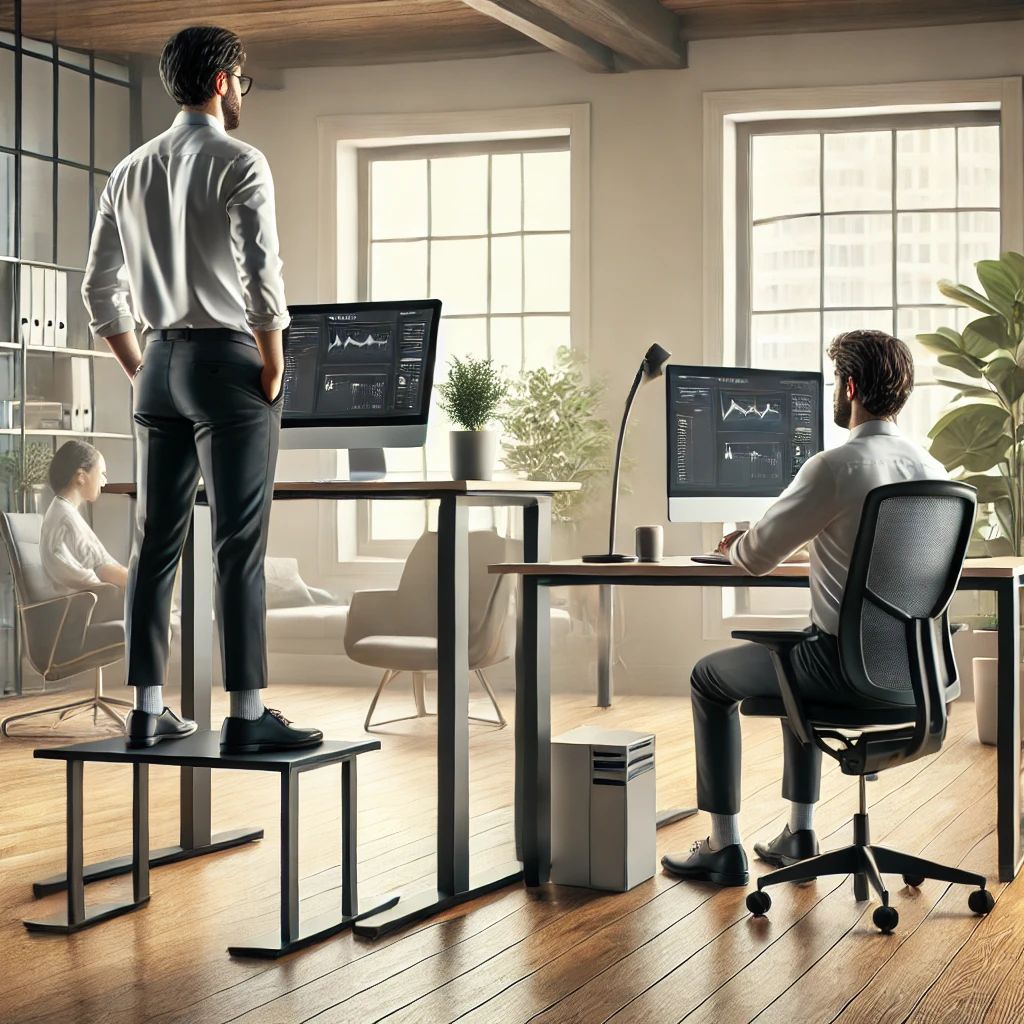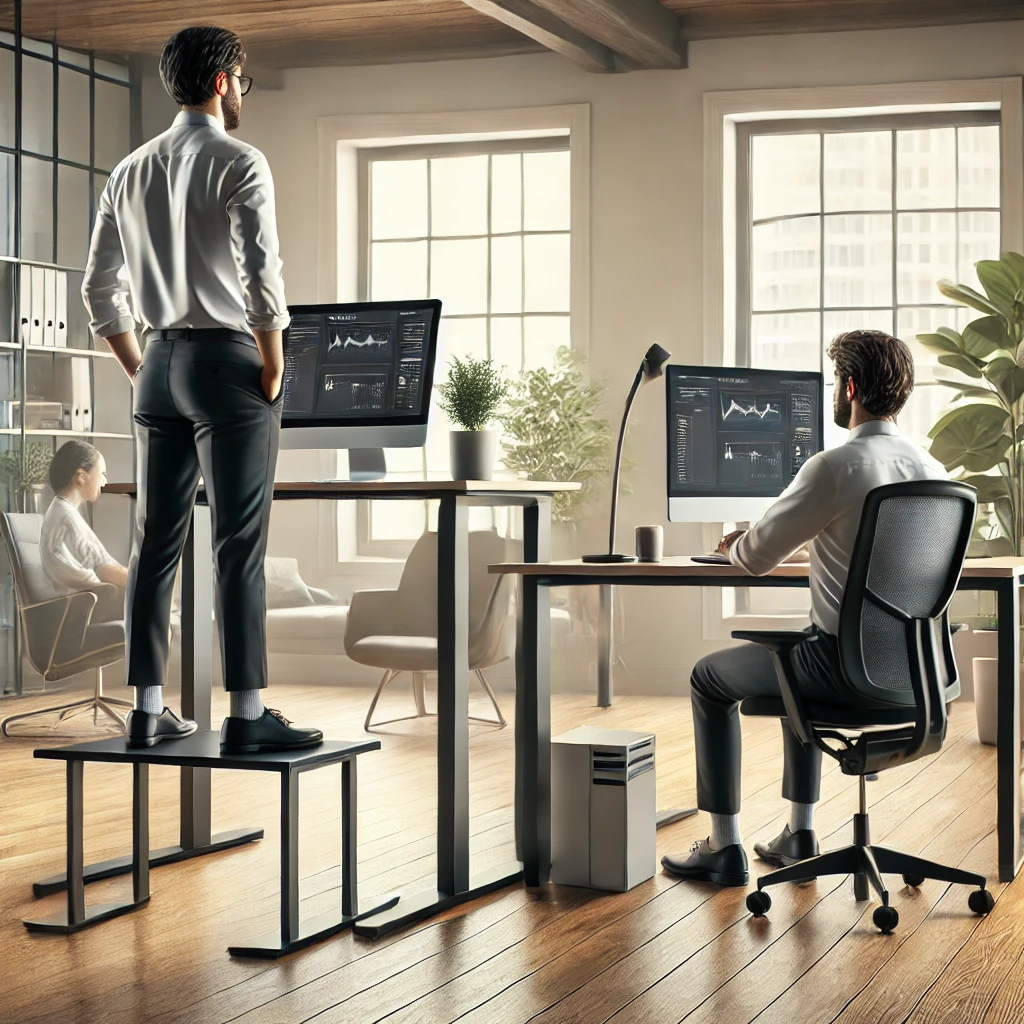Standing vs. Sitting
In recent years, workplaces have been evolving to encourage employees to break free from long hours of sitting by adopting standing desks. This shift is seen as a way to improve health by reducing the negative effects of a sedentary lifestyle. But is standing for extended periods really a better alternative, or does it come with its own set of drawbacks? In this article “Standing vs. Sitting”, we’ll explore the health benefits and risks of standing while working at a computer and whether it truly outweighs the impacts of sitting.

Sitting for long periods has been labeled as “the new smoking,” due to its association with increased risks of heart disease, type 2 diabetes, obesity, and other chronic conditions. Numerous studies have highlighted how a sedentary lifestyle negatively affects both body and mind. In response, more and more companies are introducing standing desks to allow employees to work while standing. It is thought that standing can boost productivity, reduce fatigue, and increase calorie burn.
Benefits of Standing:
Increased Energy and Focus: Standing encourages better blood circulation, which can lead to more energy and improved concentration. Research shows that employees who stand while working tend to feel less fatigued throughout the day.
Higher Calorie Burn: Standing burns slightly more calories compared to sitting. On average, standing for one hour can burn about 50 more calories than sitting, which, over time, can have a positive impact on weight management.
Reduced Risk of Chronic Diseases: Standing may help improve blood sugar levels and lower the risk of developing type 2 diabetes, especially when combined with movement, such as short walks every hour.
Drawbacks and Potential Risks: However, standing also comes with downsides, especially if done for prolonged periods without breaks.
Circulation Issues: Prolonged standing can cause swelling in the legs and ankles and can worsen varicose veins. This is particularly problematic for individuals who stand for long hours without shifting positions or getting enough movement.
Back and Joint Pain: While standing may alleviate lower back pain caused by sitting, too much standing without proper support or posture can lead to discomfort in the back, knees, and joints. Striking a balance between sitting and standing is key to avoiding these issues.
Mental Fatigue: Although standing can boost productivity in the short term, research indicates that too much standing may cause fatigue and reduced mental sharpness after extended periods.
Balance is Key: The latest research suggests that neither sitting nor standing is ideal when done for long periods without breaks. The best approach is to find a middle ground, combining both ways of working. Experts recommend changing positions every 30 to 60 minutes, incorporating short walks and stretches throughout the day. Having an ergonomically adjusted workstation is important, regardless of whether you are sitting or standing.

Standing while working at a computer offers certain health benefits, but it is not a magic solution to the problems associated with a sedentary lifestyle. Like most things, balance is essential. Combining standing, sitting, and regular movement will help you maintain your health and productivity without causing additional problems.
More Useful Links:
Mental Health and Stress Management Strategies: Key Tips for Better Well-Being
Working from Home: Healthy Habits for Productivity and Well-being
Joint and Spine Health: Simple Exercises to Improve Mobility and Prevent Posture-Related Issues
For more healthy tips and useful information, be sure to check out our Health Journal and the Healthy Habits page. Find inspiration to maintain healthy habits and improve your well-being.
